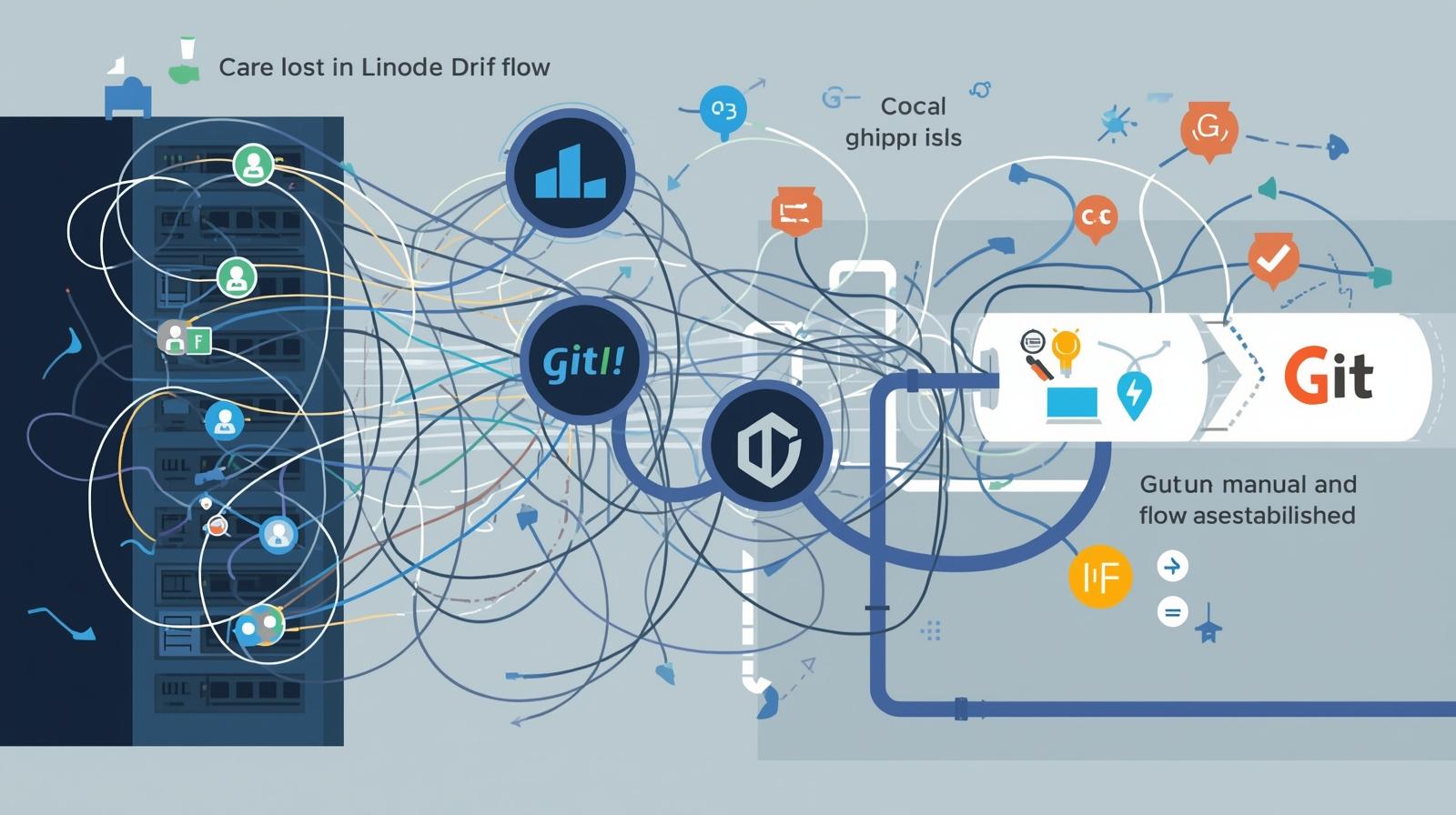Bringing Linode Back Under GitHub Control

Bringing Linode Back Under GitHub Control
— Resolving Environment Drift and Establishing a Manual CI/CD Flow —
Background
- The frontend is hosted on Vercel.
- The CMS (Payload + MongoDB Atlas) runs on Linode in a Docker container.
- Over time, the production code on Linode diverged from the local repository.
- As a result, we ended up in a state where local development could no longer reproduce production — let’s call it the “Lost in Linode” problem.
This situation created risks:
- Debugging locally was impossible.
- No one was sure which version of the code was the “source of truth.”
Challenges
- Environment Drift
- After the initial deployment, hotfixes and changes were applied directly on Linode without being synced back.
- Config differences (Caddy, Payload) grew over time.
- Partial Git Management
- The
payloaddirectory wasn’t fully committed or synced. git pulldidn’t restore the same state as production.
- The
- Confusing Environment Variables
.envvs.env.localusage was inconsistent.- Docker Compose referenced
.env.local, but production only had.env.
Steps Toward Resolution
1. Backing Up Production
- Used
docker cpto copy the Payload code from the container back to the Linode host. - Transferred it via
scpto local, then replaced the localpayloaddirectory. - Committed the production state to GitHub.
→ This reestablished GitHub as the single source of truth.
2. Switching Linode to Git Workflow
- Initialized the project on Linode as a Git repo.
- Standardized the deployment flow:
git pull origin main
docker compose build && docker compose up -d - From now on, Linode no longer drifts: it always matches GitHub main.
3. Cleaning Up Environment Variables
- Decided:
- Production →
.env - Local development →
.env.local
- Production →
- Added
docker-compose.override.ymlto point to.env.localonly in dev. - Warnings remain, but prod and dev are now safely separated.
What We Learned (Framed in General IT Skills)
- Configuration Management
- By treating GitHub as the single source of truth, we eliminated environment drift.
- Deployment Standardization
- On Linode, deployment is always
git pull → docker compose up. - Ensures reproducibility and reduces human error.
- On Linode, deployment is always
- Environment Variable Management
- Clear separation between
.env(prod) and.env.local(dev). - Early step toward proper Secrets Management.
- Clear separation between
- Manual CI/CD
- Not automated yet, but we established a repeatable cycle:
push → pull → build → up → test. - This is the first building block toward full CI/CD automation.
- Not automated yet, but we established a repeatable cycle:
Conclusion
This work was essentially an exercise in DevOps fundamentals:
- Resolved code drift by re-syncing Linode with GitHub
- Standardized deployment workflows
- Organized environment variables properly
With this, the “Lost in Linode” issue is gone, and future deployments are much safer.
